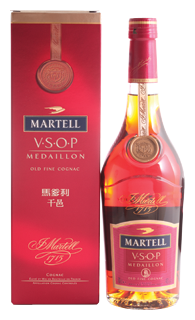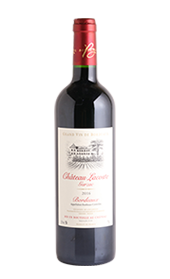Knowledge
Cognac
 Briefly:
Briefly:
Cognac is a spirit distilled from grape wine.
Area of production and types:
The Cognac commune in the Charente Department in southwestern France.
Characteristics:
Cognac has a rich beautiful Amber colour, with an alcohol percentage of around 40%
Age and classification:
Cognac is classified according to the time it has been aged in oak barrels into the following categories:
- X.O (extra old) aged at least for 6 years
- V.S.O.P (very superior old pale) aged at least for 4 years
- V.S (very superior) aged at least for 2 years
In practice, however, the ages of the Cognacs tend to be older than the abovementioned minimum regulations.
Serving Suggestions:
Suitable for drinking on its own, or mixed. The V.S.O.P and the V.S can be enjoyed mixed with Soda, Tonic Water, ginger ale, Orange Juice or Soda Water, the X.O is generally enjoyed on its own. Traditionally served with things such as lobster soup, Cognac fried foie gras, but Cognac can be enjoyed together with a variety of foods, ranging all the way to chocolates etc.
Recommended Storage:
Store in a cool, dry, dark place, away from direct sunlight. Consume after opening. The quality of an opened bottle of cognac will reduce over time.
French Wines
 Briefly:
Briefly:
Introduction to French Wines:
French wines are highly praised by connoisseurs around the world, and Bordeaux is arguably the most famous wine region. Mildly warm and moderate, the climate of Bordeaux is favourable for the growth of grapes. The low temperature brought by ocean breeze also gives grapes a chance to ripen in excellent conditions, while the sand and mud contents in various types of soil allow different specialty grapes to grow. Thanks to its time-honoured craftsmanship and skills found in the area, Bordeaux has been a world-famous wine region since the 12th century.
Tannin:
The skins, seeds and stems of grapes are the primary source of tannin. By infusing the juice, skins and seeds of grapes, wine farmers could release tannin from the mixture. Tannin does not only support the structure of wine, but also offers protection such that wine can age without turning bad. Tannin can make the tip of tongue, or all our taste buds, feel dry, which can help neutralise the greasiness in food. Tannin is also a natural antioxidant, from which the human body can benefit.
Decanting:
Decanting is a process that allows the wine to come into contact with air and to release more aromas from the wine; it also softens tannin such that the palate of the wine becomes more mellow and smooth. There is no clear-cut standard for decanting, which depends on the aroma and the strength of tannin of each wine. Generally speaking, younger wines or wines high in tannin must be decanted. Older wines only require a change of bottle to separate the liquid from precipitates before they are served.
Pairing with food:
- Red wine: red meat, dishes with strong flavours and cheese, etc.
- White wine: white meat, seafood and cold dishes, etc.
- Dessert wine: spicy food, cheese and desserts, etc.
Stated above are only some common ways to pair your wine with food. The pairing should be based on the character of each wine and not be over-generalised.
Wines that are high in tannin are more suitable for pairing greasy and boldly-flavoured dishes. Wines that are lower in tannin pair better with mildly flavoured dishes.
Wine is magical because pairing it with different foods can add something different.
Avoid direct exposure to light. The most ideal temperature for storage is between 12-15°C. The temperature should be kept stable. Fluctuations in temperature should not be allowed.
- For long-term storage:
We suggest placing the bottles horizontally such that the cork can be in touch with the wine. This keeps corks from drying out and cracking from extended storage, and also stops air from entering the bottles to cause oxidation. - Opened wine:
Re-sealed wine can be stored in the refrigerator for 3-5 days. Leftover wine can be used for cooking.
Suggested cleaning method: use hot water to clean and then air dry.
Suggested storing method: hang them on shelves to avoid exposure to other items with strong smells, which may affect the flavours of wines.
